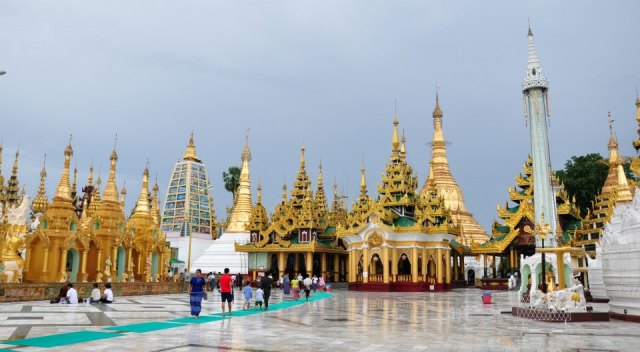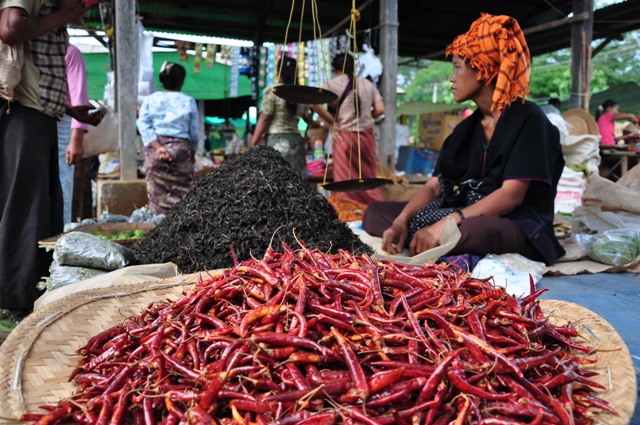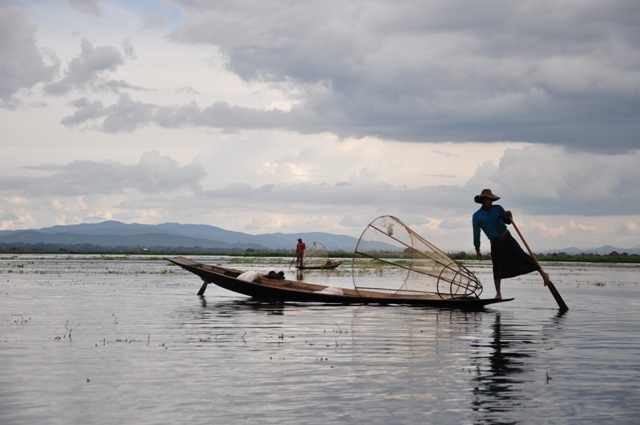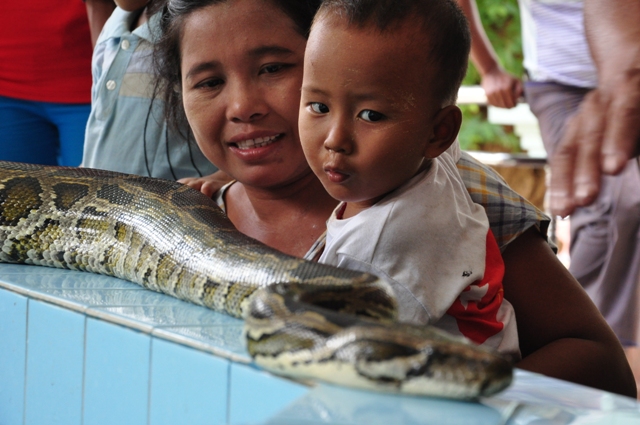“The Golden Country” as Marco Polo named it is full of Buddhist temples and smiling people. It’s like the time has stopped – electricity is available only during certain hours of the day, there’s no mobile network, no ATMs and only a handful of people speak Englih. To quote the Nobel winner for literature Rudyard Kipling : »It is quite unlike any place you know about.«
.jpg)
Planning a trip to Myanmar, this huge country wedged between India, Bangladesh, China, Laos and Thailand, has to start at home. You can only enter by plane if you already have a permit. Since they have no embassy in Slovenia, you can get it either in Berlin or Belgrade. When all the formalities are done a trip to the past can begin.
The modern and unofficial capital of Yangon
Most travellers first arrive at
Yangon, the biggest city in the country, although the capital still lies in Najpjidav. It’s surprising to see neat streets with city lights, tended parks and modern buildings. But more surprising, there’s something missing, that is found anywhere in Asia – there are no motorbikes anywhere. Can it be? Yes, they are prohibited in Yangon! The second thing that surprised me is that they drive in a lane on the same side that their car has the steering wheel: so they drive like us – on the right side of the road; but have the steering wheel like the Brits – also on the right side of the car. The city is known as the economic heart of the country and also the home to the most famous religious monument in the land the
Shwedagon pagoda. It’s a golden pagoda 99 metres tall, standing proud on a platform of marble, showing off shiny diamonds and rubies that are part of the umbrella on the top. As the locals do, so did I, walk around the pagoda in a clockwise direction.

In Yangon there is also the colonial quarter, for the country was run by British for a long time. That’s why most cars have the steering wheel on the right, but after they’ve left, people started driving on the right lane of the road – without changing the cars. During colonial time they also built the Scott market, a very popular place for foreign and domestic tourists, also known as Bogyoke Aung San Market. It’s a huge covered complex with stands that offer almost anything: from local delicacies to clothes, souvenirs, jewellery, pictures, furniture… and you need to haggle for any of it, naturally. With some good will and stamina you can get a fair price quite easily.

Yangon is encircled by the railroad, for which the train takes some 3 hours to circle and the fare is 1$. When I entered the train, that was what I’ve expected from this land – old wooden benches, no glass on the windows, smiling people with lots of things they brought from the country to trade with, vegetables, chicken, babies with no dippers and lots of bikes. No one mind the photo, and their smiles even got brighter. Looking through the window I saw the green landscape with many rice fields speed by.
Giro d'Mandalay
A few years ago they’ve built the new highway between Yangon and Mandalay, which was the next positive surprise. I was fearing the long drives with bad busses, but instead I arrived there quickly and comfortably on a night trip – unlike any bus after that one. The weather convinced us to rent bikes and explore the town. Many various pagodas got on my path, I only avoided the palace of Mandalay, for the entrance fee is really high. I deliberately avoided all services that filled the governmental budget – these are governmental entrance tickets, certain hotels, trains and so on. Why? Old Burma suffered under the military cue for a long time, that had high taxes and violated human rights, had the military hour and brought the people to their knees. I cannot support that.

At the entrance of some cities they have control points where each foreigner must pay a “pass” to get into the city (that’s the case with Mandalay, Bagan, Bago and Lake Inle). I’ve managed to enter Mandalay and Bago without paying – probably because I’ve arrived so early, the control point wasn’t opened yet. During the sightseeing officials can check for this pass, so you always have to have it with you; and some sights are only accessible with it. So I stayed clear of pagodas and stupas in Mandalay and went up the »Mandalay Hill« in the evening to enjoy the sunset and a chat with the monks.

The people here have always changed their capitals. So I took the taxi to visit the capitals of the past, the cities of Nwa, Saigang and Amarapura, where I walked the longest tickwood bridge in the world – U Bein. I’ve stopped at the nearby temple, where they have three pythons today and a former python is supposed to reincarnate into two gilrs. Everyday you can watch the ritual bathing at 11am or have a photo with a python.
Magical Bagan
If there was a place that really bedazzled me during my stay it was Bagan. A huge are with one thousand and one (well 2200 actually, but in the past there were over 10.000) stupas and pagodas and it’s the Buddhist equivalent of a Disneyland for grownups. Foreigners cannot rent motorbikes here, so again I cycled, but it wasn’t such a cool idea, for temperatures raised over 40 centigrade and the distances were not really short. Still I saw the tallest (61m tall) the oldest (from the 9th century), the largest, the most attractive, and many other temples.
In the evening: mission sunset
After a difficult day I climbed the steep stairs to the upper level of the popular Shwesandaw temple and deliberately watched only the stairs under my feet. I wanted to see the landscape only from the highest point, so when I came to the top – all tired and out of breath – I was stunned with fascination. I’ve never seen anything like this. Wherever I’ve looked, I recognised a pagoda – a brown, brick, white or covered with leaves… and while the sun was setting and shone upon the land with a gentle orange all the pagodas and temples started glowing with a special aura. The sky got various beautiful colours and the silence was spoiled only by numerous cameras clicking the photos away.
.jpg)

.jpg)